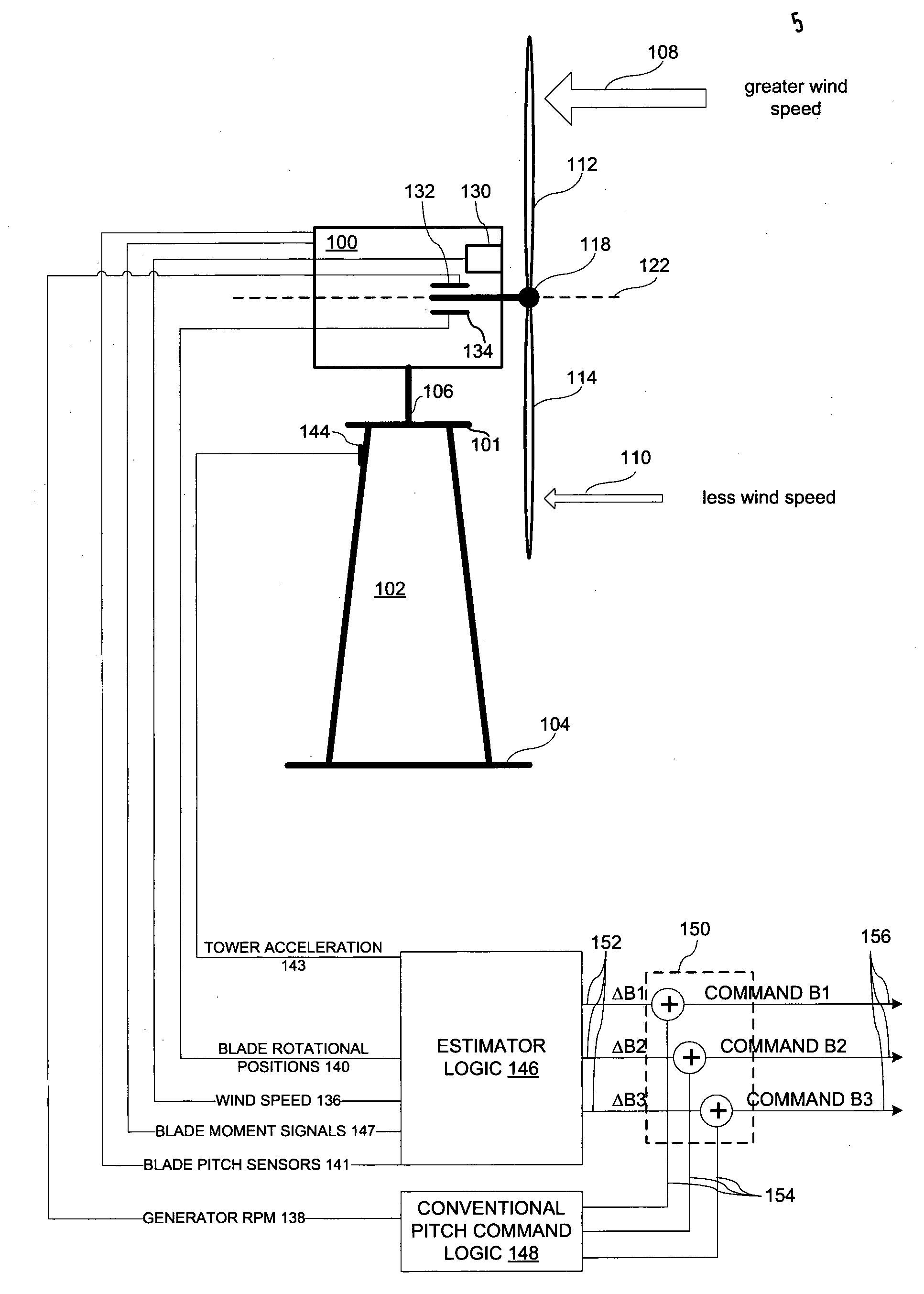Wind turbine damping of tower resonant motion and symmetric blade motion using estimation methods
a wind turbine and symmetric blade technology, applied in the direction of rotors, vessel parts, vessel construction, etc., can solve the problems of increasing blade loading, shortening the life of the tower, and exacerbate the bending of the blad
- Summary
- Abstract
- Description
- Claims
- Application Information
AI Technical Summary
Benefits of technology
Problems solved by technology
Method used
Image
Examples
Embodiment Construction
[0036]Refer to FIG. 1, which is a block diagram of a variable-speed wind turbine apparatus in accordance with the present invention. The wind-power generating device includes a turbine with one or more electric generators housed in a nacelle 100, which is mounted atop a tall tower structure 102 anchored to the ground 104. The nacelle 100 rests on a yaw platform 101 and is free to rotate in the horizontal plane about a yaw pivot 106 and is maintained in the path of prevailing wind current.
[0037]The turbine has a rotor with variable pitch blades, 112, 114, attached to a rotor hub 118. The blades rotate in response to wind current. Each of the blades may have a blade base section and a blade extension section such that the rotor is variable in length to provide a variable diameter rotor. As described in U.S. Pat. No. 6,726,439, the rotor diameter may be controlled to fully extend the rotor at low flow velocity and to retract the rotor, as flow velocity increases such that the loads del...
PUM
 Login to View More
Login to View More Abstract
Description
Claims
Application Information
 Login to View More
Login to View More - R&D
- Intellectual Property
- Life Sciences
- Materials
- Tech Scout
- Unparalleled Data Quality
- Higher Quality Content
- 60% Fewer Hallucinations
Browse by: Latest US Patents, China's latest patents, Technical Efficacy Thesaurus, Application Domain, Technology Topic, Popular Technical Reports.
© 2025 PatSnap. All rights reserved.Legal|Privacy policy|Modern Slavery Act Transparency Statement|Sitemap|About US| Contact US: help@patsnap.com



